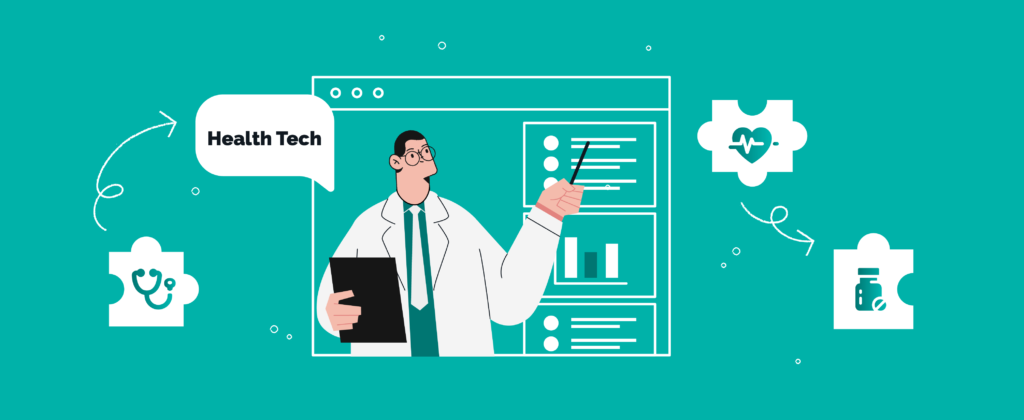The Bittersweet Joys of Working in Health Tech
I’ve recently finished my first 100 days as the CEO at this amazing health tech company that’s been doing its best for a number of years to help, in some small way, with a seemingly simple task of improving access to healthcare in Canada.
There was a time when you had every right to wonder just what it is that I mean by those words. “Improving access to healthcare” in a country that still somehow takes pride in its healthcare system seems like a misnomer at best and an oxymoron at worst. And yet for all those who have had the displeasure of sampling our system in recent years anywhere between the Maritimes and the Rockies, you know exactly what I’m talking about.
Looking at some of the responses I’ve received to my welcome e-mail, it’s obvious there’s a problem. Here are some excerpts that might resonate with many of you.
- Every clinic is at capacity by the time the doors open.
- A referral system that is a waste of time.
- People wasting a full day at a doctor’s office.
- Give people the option to have an affordable private doctor.
- Incorrect wait times and a slow app.
- Walk-in clinics creating poor standards of care.
- Driving across provincial borders to see a doctor or fill a prescription.
- Bring back virtual care for those of us with zero access.
- Clinics accepting appointments by phone only.
There are a couple of things here directed at Medimap, which we’re trying our best to help with:
- We recently killed our slow, out-of-date app, as it was eons behind our mobile/website, which most of you prefer to use anyway.
- We’re trying to get our clinics to update their wait times more often to make the system more efficient – but if you see a clinic that’s out of date, let us know, or better yet, let them know it’s something you’d like them to get better at so you can rely on the data.
- We’re also rethinking referrals and have launched our own patient accounts, which in time we hope can become an awesome vehicle for facilitating referrals (and a lot more).
- We’re also looking at various ways of bringing back virtual care and making it better than before since it’s clearly a quick tool many of you depended on.
- And our ability to load-balance the healthcare system by optimizing availability across nearby providers is making a difference in a lot of communities, across both primary care and specialist spectrums. If that improves even access to even 1% of those in need, that’s already a win.
As to the rest of the problems (and those that would take many more pages to fill) – I couldn’t agree with all of you more – the system is fundamentally and undeniably broken in so many different ways.
And it makes me so angry. Here’s why:
I’m angry because so many of these issues are fixable. Walk-in standards of care can be mitigated in any number of ways. Capacity and wait-time issues can be addressed through systemic load-balancing, less restrictive caps, and of course, improved supply.
But above all, I’m angry because we’ve allowed a very real, systemic problem to become politicized where it’s become clear that no one is truly working at addressing the root cause.
We announce ideas, we proclaim announcements, we publish plans, we embrace think tanks – but for all those efforts, we’ve got very little to actually show. And all the while, there are more emergency departments shutting down, doctors and nurses walking away from their professions, and people waiting for years to get a family doctor and sometimes days to see a professional during an actual emergency.
I don’t have a magical solution, and frankly, I’m just as frustrated as the rest of you. Solving these problems will take courage, many years of dedicated focus, and real hard work. If I can promise you anything on behalf of Medimap, it’s that we’re all about working hard to do our little bit to improve access to care and it would mean the world to me to move the needle by even 1%.
What you can do to help
If you’d like to help – write to us with ideas, demand that doctors in your areas connect to Medimap and that clinics update their wait times more frequently, ask your MPs to help us solve the root cause of the problem, talk about us at your hospitals, and to your local health authorities – in other words, just help us help you.
I initially said it’s been bittersweet because there’s so much frustration at every corner of our healthcare system and so much of it misdirected, that it just hurts. But I’m humbled to be helping and find myself surrounded by a team who deeply cares about your problems, and that, along with a testimonial or two here and there about how we’ve made someone’s life better, does bring me moments of raw joy.
Visit medimap.ca to find practitioners near you and easily access the care you need.
About the author

Thomas Jankowski
Thomas is a digital native and serial entrepreneur with firsthand experience in fintech, healthtech, travel, media and technology verticals. As one of the first Chief Digital Officers in Canada, his mandate has always been extremely polymathic and his operational oversight often includes come combination of sales, marketing, technology, product, r&d, strategy and innovation. He has been responsible for major growth at Fortune 500 enterprises including NCR or Postmedia and Growth 500 companies, such as FlightNetwork and Coinsquare and counts multiple exits under his belt. Thomas shares his time between advisory, board, and growth roles in the startup ecosystem. His current interests include blockchain, IoT, machine learning and automation.
-
Thomas Jankowskihttps://medimap.ca/author/thomas-jankowski/



